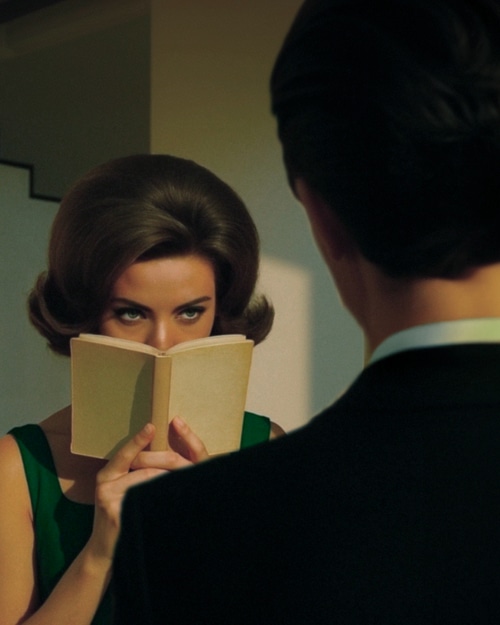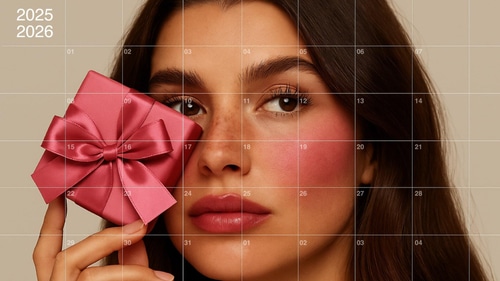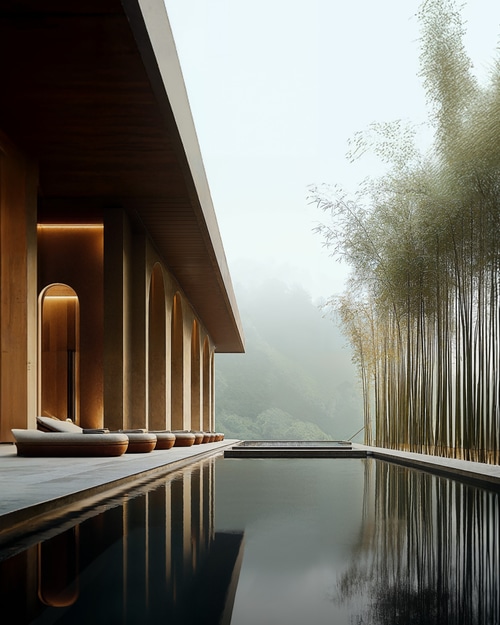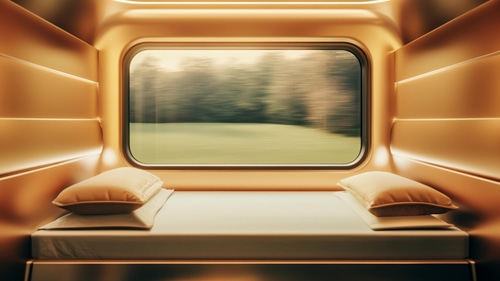
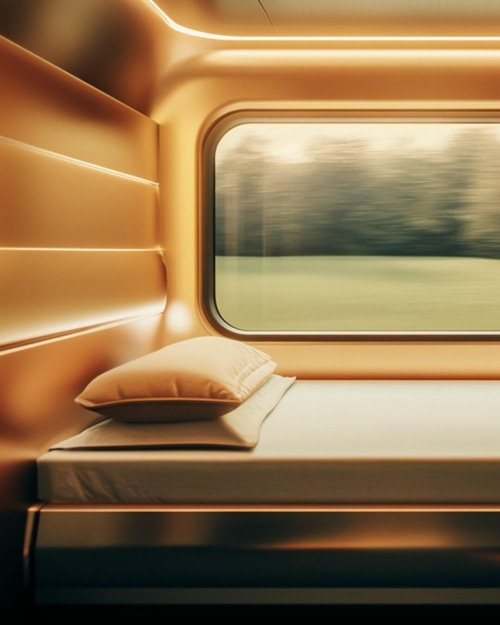
Why Luxury Travel Is Slowing Down
Even in an unpredictable economy, one sector is charting a steady course: travel. But don’t let this headline mislead you – luxury travel is booming, just this growth is now due to a fundamental, romantic shift.
According to the Business Research Company, the luxury travel segment is expected to grow by 5.2% this year. Virtuoso, a US-based luxury-focused travel agency, has seen an 81% year-over-year increase in bookings valued at over 150,000 dollars.
What’s more interesting is that this segment is predicted to be unaffected by even a potential global recession. Earlier this month, United Airlines did the unusual – it issued two separate forecasts for their business in the year ahead. But in either scenario – including the recession scenario – the airline expected growth. What’s driving this growth? The high-end and the international segments, with premium cabin bookings up 17% year over year.
Luxury travel is booming, driven by the growing desire to seek experiences over possessions. But this boom is tied to something deeper — a shift in how we travel, from A to Z.
Welcome to the era of conscious hedonism — where travel is no longer about escaping reality but moving through it with more presence, more style, more comfort, more romance.
For decades, the language of luxury travel has been shaped by speed: faster travel times, shorter itineraries, better upgrades, more streamlined everything. The most desirable experience was the one that let you skip the wait, shorten the layover. But in 2025, the mood has shifted. What’s the most rare and seductive now isn’t ultimately speed — it’s stillness. It’s the kind of intentional slowness that invites you to actually feel where you are.
Today we can see this shift in the sleeper trains relaunching across Europe, Asia, and the Middle East; in mystery flights where passengers don’t know their destination until the plane lands; in the more spacious, upgraded, and carefully curated luxury airline experiences being offered. Luxury brands – both travel brands and mainstream players across fashion, fragrance, and more – have a lot that they can draw inspiration from here, in this new era of ‘slow travel.’
IT’S ABOUT THE JOURNEY, NOT THE DESTINATION …
Today there’s a growing desire for journeys that unfold like a story: rich with atmosphere, memory, and a sense of rhythm. From Paris to Tuscany, the Venice Simplon-Orient-Express is crafting itineraries that blur the line between transport and performance — complete with live piano in the bar car, restored 1920s cabins, and new routes that offer two-night escapes into the Italian countryside. In June, the train’s Portofino journey will include a newly unveiled sleeper carriage designed by the French artist JR — a visual narrative on wheels, complete with its own library and tearoom under a skylight.
Meanwhile, in Japan, the Seven Stars sleeper train continues to redefine train travel as an art form. With only ten suites onboard, it offers a slow, sensory passage through Kyushu’s lush landscapes — combining seasonally-inspired menus, quiet music lounges, and window views that feel more like paintings than panoramas.
AT SEA, A SHIFT TOWARD SERENITY …
Meanwhile, a growing number of luxury hospitality brands are bringing their distinct world-building approach to the seas.
Aman, Four Seasons, and Orient Express have all announced plans to launch superyacht-style cruise vessels by 2027. Rather than sheer size or spectacle, the emphasis is on intentionality: smaller capacities, elevated service, refined design, and space to simply be. Aman’s first ship Amangati will feature just 47 suites, ‘reshaping ocean exploration and marking a new era in maritime adventure.’ (To put this in perspective, many cruise ships offer thousands of cabins – which makes sense given the annual number of cruise ship passengers is expected to reach nearly 40 million people by 2027.) Amangati – meaning ‘peaceful motion’ in Sanskrit – meanwhile is aiming to make travel on the seas slower, more intimate, and more intentional.
EMBRACING A SENSE OF MYSTERY …
Up above in the clouds, other concepts like SAS’s “Destination Unknown” are very much taking off. This mystery flight initiative sold out in minutes earlier this year, with thousands of loyalty program members clamoring for a chance to surrender control and rediscover the thrill of not knowing.
It works like this: Scandinavian Airlines keeps the flight destination a secret from passengers and even crew right up until when the plane lands – only the pilot knows where they’re going. The scheme operates within the Schengen Zone – thus you could have no idea whether you’re going to Greece or France, but either way, you’re en route to a holiday where all you have to do is show up and be present, the logistics taken away in lieu of total surprise.
BUILDING A MULTI-SENSORY EXPERIENCE …
Furthermore, airlines are also creating more emotional, luxurious approaches to how consumers travel. Air France’s La Première suite has redefined first-class travel not through speed or scale, but through mood. The airline has collaborated with Jacquemus to introduce luxury pajamas in signature cotton poplin, packed in pillowcase-shaped pouches. As far as we can tell, this is the first time that an airline has offered in-flight luxury brand loungewear to consumers. Beyond the softness of your clothing, every detail of your atmosphere is carefully thought-through – bedding is designed by Dumas Paris, amenity kits feature Sisley skincare, and a bespoke cocktail program has been developed by mixologist Matthias Giroud. The Air France experience has even been perfumed – a bespoke fragrance created by Francis Kurkdjian is now used in lounges and La Première suites too.
& LASTLY, CREATING A DREAM AROUND FUTURE TRIPS …
Even brands firmly on the ground can think about how they tap into our growing desire to dream and travel slowly. Rimowa has done just that with their playful revival of their 1988 colorful briefcases – ‘the suitcase for young people,’ it was called. The case is available in bright colors like Blue, Yellow, Red, and are advertised via archival imagery that sees modern travellers gazing at travel ads displayed in store windows. Taglines on the advertisements are full of this sort of conscious hedonism, slow travel-feeling we’re talking about in this article: “A world of wonder”; “Dream”; “Paradise found.” The idea of a certain kind of traveling becomes aspirational itself.
Other luxury fashion brands too are playing into this kind of symbolism – think of Aimé Leon Dore’s ongoing restoration project partnership with Porsche, for instance, with the New York brand giving a makeover last autumn of the Porsche 993 Turbo in striking but nostalgic detail.
LET’S TRAVEL DIFFERENTLY
Amigo, ‘a curated recommendations app from a community of like-minded people,’ is one rising social media app dedicated to creating the conditions for exactly the kind of travel we talk about here – and it’s catching on, with tastemakers like Mélanie Masarin and Sam Youkilis sharing windows into the worlds they’ve traveled through, sharing picks that range from the highest end to the most off the beaten path.
Travelling more slowly, immersively, sustainably – this is where luxury consumers are increasingly shifting towards according to research from American Express.
At Al Dente, we ultimately believe the best journeys aren’t necessarily the most expensive, or the most exclusive — they’re the most carefully considered, what makes us feel more connected to others in our communities and ourselves.
